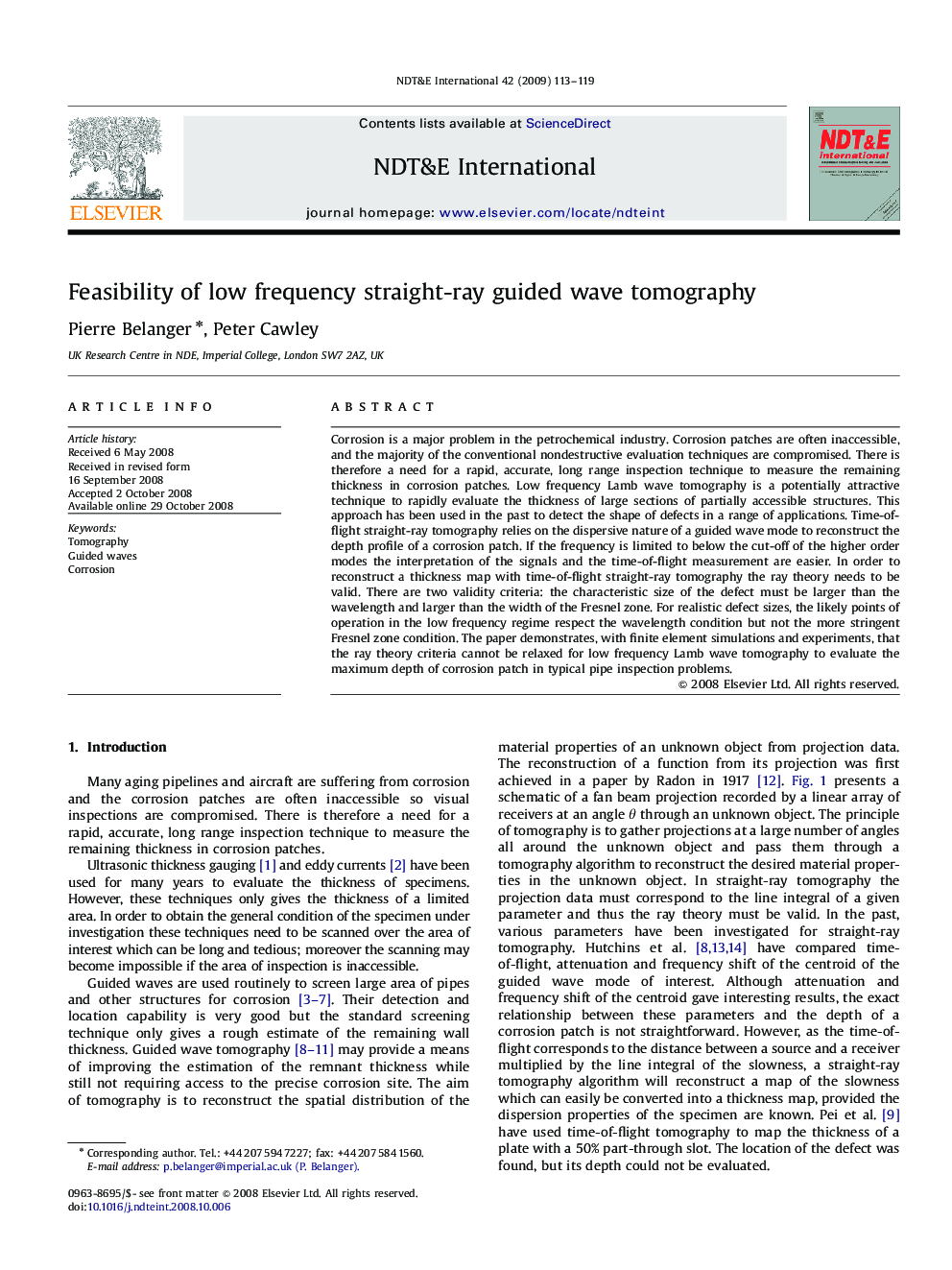| Article ID | Journal | Published Year | Pages | File Type |
|---|---|---|---|---|
| 295716 | NDT & E International | 2009 | 7 Pages |
Corrosion is a major problem in the petrochemical industry. Corrosion patches are often inaccessible, and the majority of the conventional nondestructive evaluation techniques are compromised. There is therefore a need for a rapid, accurate, long range inspection technique to measure the remaining thickness in corrosion patches. Low frequency Lamb wave tomography is a potentially attractive technique to rapidly evaluate the thickness of large sections of partially accessible structures. This approach has been used in the past to detect the shape of defects in a range of applications. Time-of-flight straight-ray tomography relies on the dispersive nature of a guided wave mode to reconstruct the depth profile of a corrosion patch. If the frequency is limited to below the cut-off of the higher order modes the interpretation of the signals and the time-of-flight measurement are easier. In order to reconstruct a thickness map with time-of-flight straight-ray tomography the ray theory needs to be valid. There are two validity criteria: the characteristic size of the defect must be larger than the wavelength and larger than the width of the Fresnel zone. For realistic defect sizes, the likely points of operation in the low frequency regime respect the wavelength condition but not the more stringent Fresnel zone condition. The paper demonstrates, with finite element simulations and experiments, that the ray theory criteria cannot be relaxed for low frequency Lamb wave tomography to evaluate the maximum depth of corrosion patch in typical pipe inspection problems.
